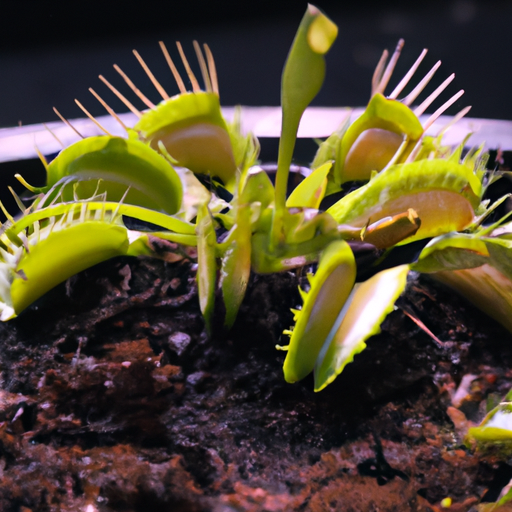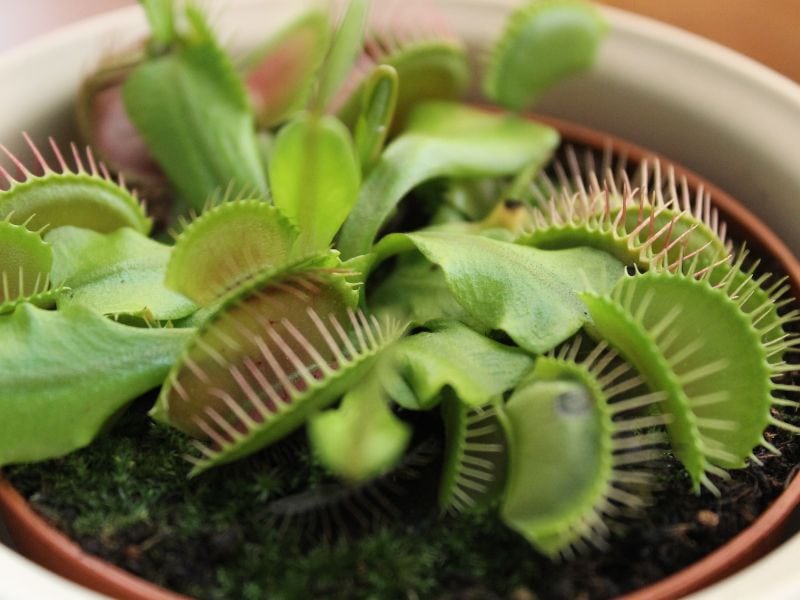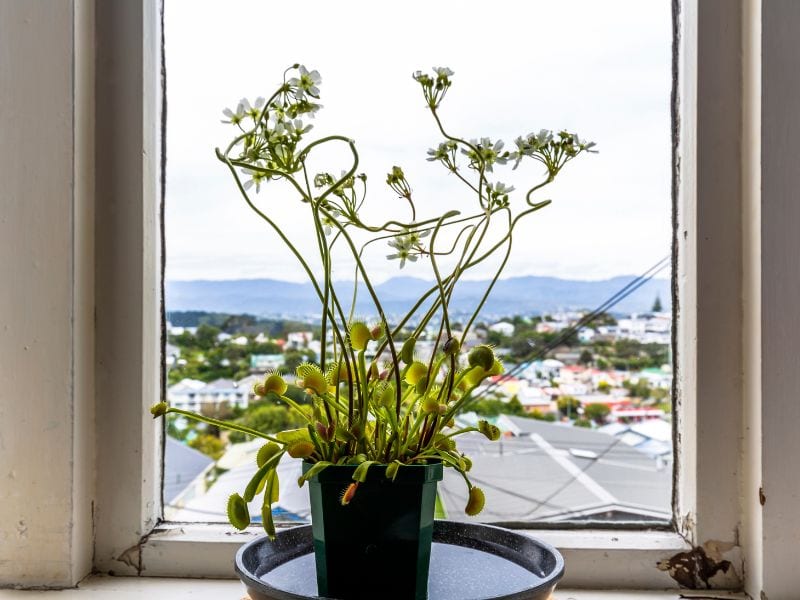Table of Contents
How to Propagate Venus Fly Traps: A Step-by-Step Guide

Welcome to the wonderful world of propagating Venus fly traps! This carnivorous plant is a great addition to any home, and propagating it is a fun and rewarding experience. Here’s a step-by-step guide to help you get started.
Step 1: Gather Your Supplies
Before you begin, you’ll need to gather a few supplies. You’ll need a pair of scissors, a potting mix specifically designed for carnivorous plants, and a shallow container.
Step 2: Prepare the Soil
Fill the container with the potting mix and moisten it with distilled water. Make sure the soil is damp but not soggy.
Step 3: Cut the Leaves
Using the scissors, cut off a few of the leaves from the Venus fly trap. Make sure to cut them at the base of the leaf, where it meets the stem.
Step 4: Plant the Leaves
Gently press the leaves into the soil, making sure that the cut end is facing down. Make sure the leaves are spaced out and not too close together.
Step 5: Water the Soil
Using a spray bottle, lightly mist the soil with distilled water. Make sure not to overwater, as this can cause the leaves to rot.
Step 6: Place in a Sunny Spot
Find a spot in your home that gets plenty of indirect sunlight. Place the container in this spot and make sure to keep the soil moist.
Step 7: Wait and Watch
Now all you have to do is wait and watch! It can take several weeks for the leaves to take root and start growing. Once they do, you’ll have your own Venus fly trap babies!
Congratulations! You’ve just successfully propagated your own Venus fly trap. Enjoy watching your new plants grow and thrive!

The Benefits of Growing Venus Fly Traps in Containers
Growing Venus Fly Traps in containers is a great way to enjoy these fascinating plants without having to worry about them taking over your garden. Here are some of the benefits of growing Venus Fly Traps in containers:
1. Easy to Care For: Venus Fly Traps are relatively easy to care for when grown in containers. They require a soil mix that is high in organic matter, such as peat moss, and need to be kept moist. They also need plenty of light, so make sure to place them in a sunny spot.
2. Portability: Growing Venus Fly Traps in containers makes them easy to move around. If you want to move them to a different spot in your garden, or even take them with you on vacation, it’s easy to do.
3. Containment: Growing Venus Fly Traps in containers helps to contain their spread. If you’re worried about them taking over your garden, growing them in containers is a great way to keep them in check.
4. Fun to Watch: Watching Venus Fly Traps catch their prey is a fascinating experience. Growing them in containers makes it easy to observe their behavior up close.
Overall, growing Venus Fly Traps in containers is a great way to enjoy these fascinating plants without having to worry about them taking over your garden. With the right care and attention, you can enjoy these plants for years to come.
How to Create the Perfect Growing Environment for Venus Fly Traps
Creating the perfect growing environment for Venus Fly Traps is essential for keeping them healthy and happy. Here are some tips to help you create the ideal environment for your Venus Fly Trap.
Light: Venus Fly Traps need plenty of bright, indirect sunlight. Place your plant in a south-facing window or outdoors in a shady spot. If you don’t have access to natural sunlight, you can use a grow light.
Water: Venus Fly Traps need to be kept moist at all times. Use distilled or rainwater to water your plant, as tap water can contain minerals that can damage the plant. Water your plant until the soil is saturated, and then allow the soil to dry out before watering again.
Soil: Venus Fly Traps need a special soil mixture that is rich in organic matter and drains well. A good mix is one part peat moss, one part perlite, and one part sand.
Temperature: Venus Fly Traps prefer temperatures between 70-85 degrees Fahrenheit. If you live in a colder climate, you can keep your plant indoors during the winter months.
Humidity: Venus Fly Traps need high humidity levels to thrive. You can increase the humidity around your plant by misting it with water or using a humidifier.
Fertilizer: Venus Fly Traps don’t need to be fertilized, but if you want to give your plant a boost, you can use a fertilizer specifically designed for carnivorous plants.
By following these tips, you can create the perfect growing environment for your Venus Fly Trap and ensure that it stays healthy and happy.
Common Mistakes to Avoid When Caring for Venus Fly Traps
When it comes to caring for Venus Fly Traps, there are a few common mistakes that you should avoid. Here are some of the most important ones:
1. Overwatering: Venus Fly Traps need to be watered regularly, but they don’t need to be soaked. Too much water can cause the roots to rot and the plant to die. Make sure to only water your Venus Fly Trap when the soil is dry.
2. Not providing enough sunlight: Venus Fly Traps need plenty of sunlight to thrive. Make sure to place your plant in a spot that gets at least 6 hours of direct sunlight each day.
3. Not feeding the plant: Venus Fly Traps need to be fed regularly in order to stay healthy. You can feed them small insects like flies or spiders.
4. Not providing the right soil: Venus Fly Traps need soil that is rich in nutrients and drains well. Make sure to use a soil that is specifically designed for carnivorous plants.
5. Not providing the right temperature: Venus Fly Traps need temperatures between 70-85 degrees Fahrenheit in order to thrive. Make sure to keep your plant in an area that is not too hot or too cold.
By avoiding these common mistakes, you can ensure that your Venus Fly Trap stays healthy and happy! Love carnivorous plants? Check out our guide on the amazing pitcher plant!


